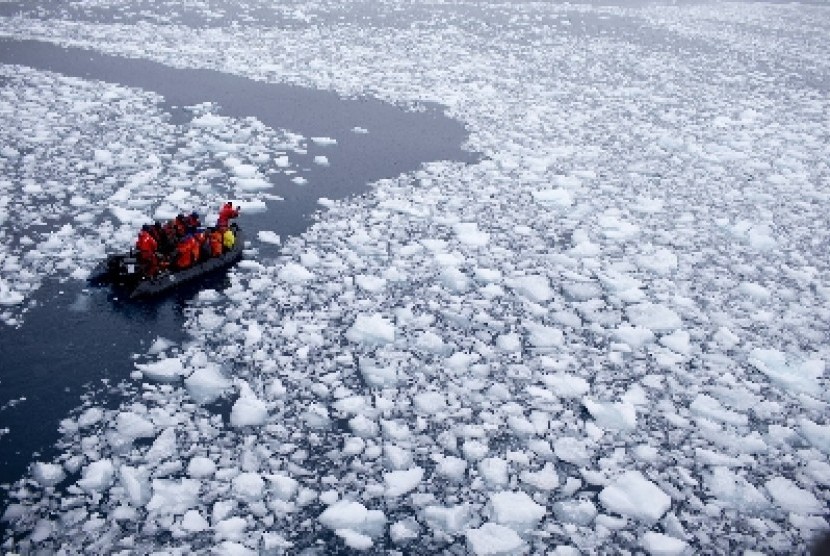The giant rift indicates that the ancient ice is prone to melting.
REPUBLIKA.CO.ID, JAKARTA — A new study revealed a large hole opened in the oldest and thickest ice sheet in the Arctic in May 2020. This area is known as the last ice area or last ice area. Scientists previously thought that this area of ice was the most stable in the Arctic. The giant rift indicates that the ancient ice is prone to melting.
Polynya, or open water areas were first observed north of Ellesmere Island. But in their report on the hole in the ice in August in the journal Geophysical Research Letters, the researchers concluded from old satellite data that similar Polynyas may have opened in 1988 and 2004.
“The northern part of Ellesmere Island is difficult to move the ice or melt it just because it’s thick, and there’s quite a lot of it,” said study lead author Kent Moore, an Arctic researcher at the University of Toronto-Mississauga, in a question. Space, Sunday (24/10).
“So, in general we have never seen Polynya form in that area before,” he said.
The Changing Arctic
The thickness of the sea ice off the northern coast of Ellesmere Island is typically over 13 feet (four meters) and has an average lifespan of five years. However, the last ice area or last ice area The Arctic is proving vulnerable to the rapid warming that occurs in northern latitudes.
Studies show that in the summer of 2020, the Wandel Sea, or the eastern part of the “last ice” region, lost half of the ice above it. Another study in 2021 showed that the ice arc linking the stable sea ice to Greenland formed later and melted faster each year.
– .


